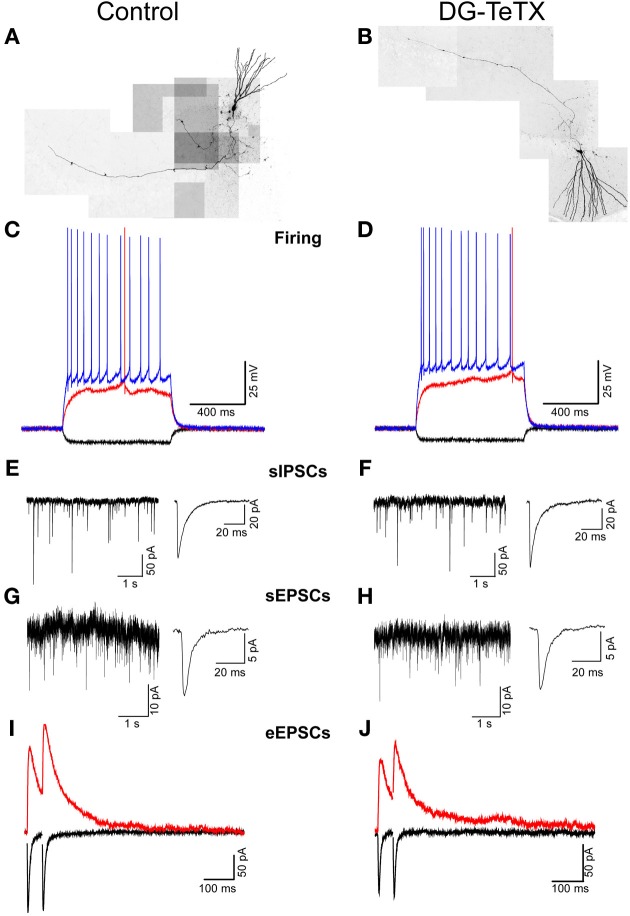Figure 4.
Prolonged blockade of the synaptic output from old GCs does not alter their electrophysiological characteristics. (A,B) Composite images of representative old GCs recorded in slices from control (A) and activated DG-TeTX (B) mice. (C,D) Traces from representative recordings obtained in old GCs of control (C) and activated DG-TeTX mice (D) showing membrane responses to hyperpolarizing (−50 pA; black traces), just threshold level depolarizing (red traces) and twice threshold level depolarizing (blue traces) current pulses. (E–H) Representative gap-free traces of pharmacologically isolated spontaneous GABAA receptor- and AMPA receptor-mediated IPSCs (E,F) and EPSCs (G,H) with ensemble averages (right traces) obtained in old GCs of control (E,G) and DG-TeTX (F,H) mice. (I,J) Paired pulse (50 ms inter-stimulus interval) perforant path-evoked EPSCs at a holding potential of −70 mV (black traces, to monitor the AMPAR-mediated component) and at a holding potential of +40 mV (red traces, to reveal the NMDAR-mediated component) in representative recordings from old GCs in control (I) and DG-TeTX (J) mice.

